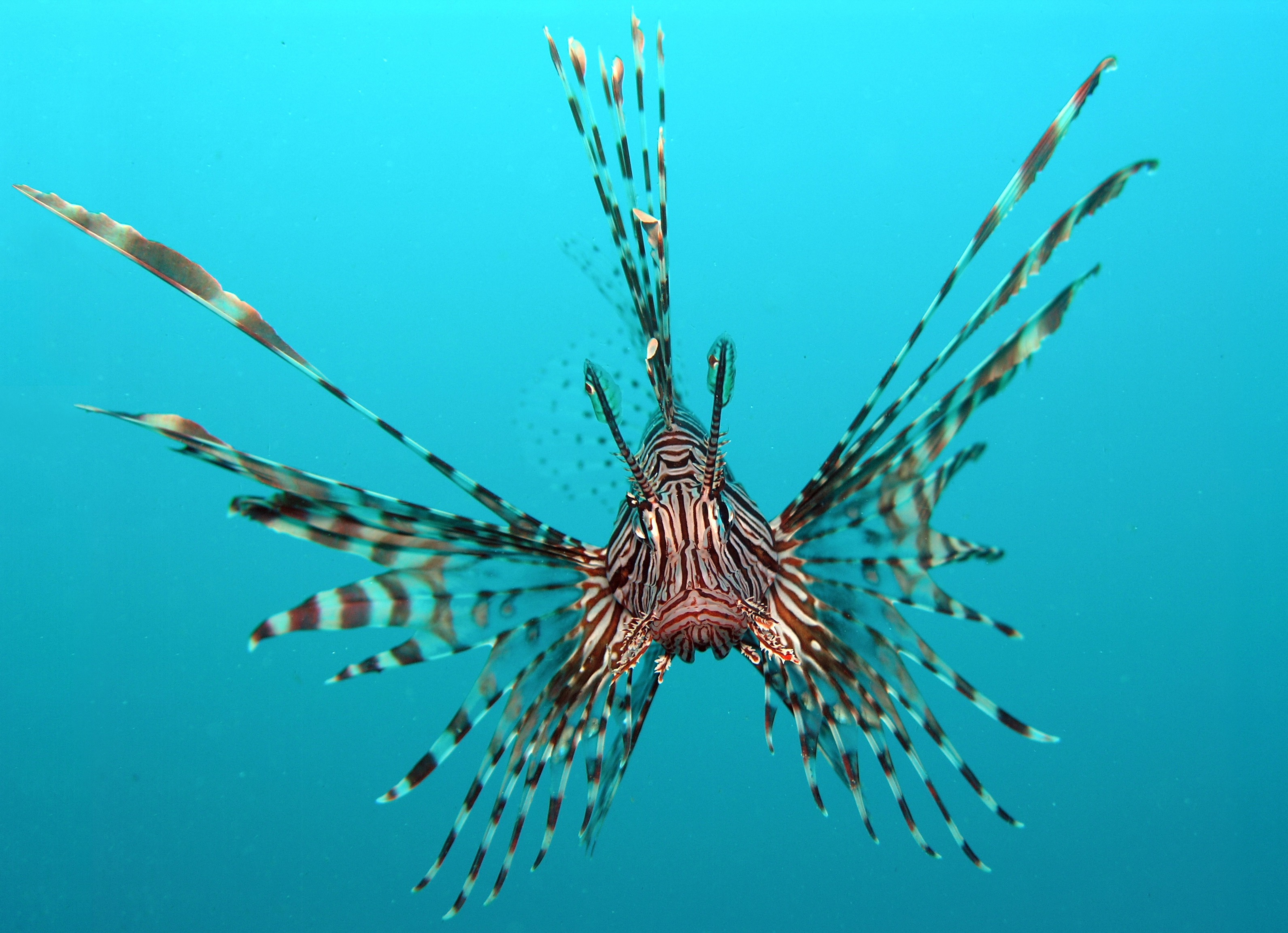Red Lionfish
The Red Lionfish is a deceptive creature – the beautiful, colourful fins cover stings coated with venom and despite their overall impressive appearance, the Lionfish are in fact ruthless hunters. People who live near waters where this fish is seen, consider it a very dangerous sea creature and will avoid it at all costs. Although the sting is not deadly to humans, it is extremely painful.
This species of fish inhabit quite a large area of warm coastal waters in the reef zone of the Indian and Pacific Oceans, ranging from the coasts of Africa to even Philippines and islands at the western part of the Pacific Ocean. The Red Lionfish is fairly large, reaching up to 38 cm in length, with a stomach fin of up to even 80 cm. The colouration varies, when striped brown, rusty or even red colours can be observed.
Most of the Red Lionfish live in shallow waters, under large cliff chunks or near the coral reefs. Their bright colouration actually provides a great camouflage among the various tropical water plants. The Lionfish are known for their immobility, and they will often stay in one cover for multiple hours. Red Lionfish don’t have many natural predators, because displaying the massive stings will drive away almost all sea hunters that would otherwise attack the Li0nfish.
All Lionfish are predators and they eat almost all fish and crustaceans they can eat. The only species that can be safe from this sea predator are the ones that live in the very bottom of the ocean or those that hind in cliff gaps and have an excellent camouflage. Weird as it might seem, these fishes don’t actually use their impressive stings when hunting – food is caught simply by trying to lure it into the mouth. As this hunting technique is very energy conserving, the Red Lionfish is satisfied by one successful hunt per multiple days.
The mating period falls in spring. After copulation, the female lays millions of eggs in an open area and they are soon carried away by the ocean streams, thus the Lionfish doesn’t really take care of their offsprings in any way. Some relative species, however, let the eggs develop in the female’s body and give birth to already hatched fish, who are fully developed and have a lesser chance to be eaten by some predatory fish.
For their spectacular appearance, the Red Lionfish are very popular as aquarium fish, but this does not affect the population much, and the population of these fish seems to be stable. When handling these fishes in aquariums, great care must be taken, because the venom, although not deadly, is extremely painful and the wound will take a very long time to heal.





อยากไปดูตัวจริง